Andrew Paul Wood – 5 October, 2017
The exhibition spaces have been divided into three broad sections: on the second floor, the North Gallery has become Te Ana Moemoeā, the space for contemplation, concentration and dreaming; the cavernous Mair Gallery is now Te Whare Mārama, the Hall of Light; the downstairs gallery is Te Whare Puni, the campsite, where many of the artists are sleeping on mattresses on the floor as in a noho.
Ōtautahi/Christchurch
Ngāi Tahu artists in Residence
Paemanu: Nohoaka Toi
8 September - 26 November 2017
The last large exhibition that showcased Ngāi Tahu artists was Te Puāwai o Ngāi Tahu at Christchurch Art Gallery in 2003. That brought together twelve contributors—including the late Cath Brown, Neil Pardington, Chris Heaphy, Ross Hemera, Areta Wilkinson and Nathan Pohio, and was an exhibition mediated and contextualised by—and responding to the structures of—Pākehā art gallery protocols. This makes Paemanu: Nohoaka Toi—Ngāi Tahu Artists in Residence at CoCA all the more ambitious and remarkable, for the kaupapa being established by the artists themselves.
The paemanu is the thwart of a waka where the paddlers sit, a reference to the collarbone of the pouākai (bird monster), as depicted many times in taoka tuhutuhi nehera—a launching place and roost for Ngāi Tahu artists. A nohoaka is a place of shelter, a place to rest up, bond, and take stock. In the context of Te Wai Pounamu/the South Island, these were the limestone shelters used by moa hunters and pounamu gatherers in the pre-European past, and sites of fantastic rock art. That Theo Schoon called them “New Zealand’s oldest art galleries” leads us in a nice full circle where an art gallery is repurposed as a shelter.
Many of the artists who participated in Te Puāwai o Ngāi Tahu appear in Paemanu: Nohoaka Toi. The full roster is a who’s who of esteemed practitioners and a number of less familiar names: Hemera, is of course, the poutokomanawa of the group; Wilkinson; Pohio; Pardington; Simon Kaan, broadening the whakapapa with his deep south Hainamana/Chinese ties; Peter Robinson; Lonnie Hutchinson; Rachael Rakena; Fayne Robinson; Ranui Ngarimu; Louise Potiki Bryant; Martin Awa Clarke Langdon; Kiri Jarden and many others.
Before talking about the content of the happening (because the kaupapa of the event is truer to a 1960s happening than a static, passive art show), it’s important to establish the context of why and how this is happening. Near the end of last year senior artists in Ngāi Tahu initiated a series of wānanga to discuss the kaupapa and curation of Nohoaka Toi, envisioning CoCA as a temporary camp to be occupied (a charged word to think about in relation to late colonial politics and default Pākehā spaces like art galleries), shared, visited, and layered (in the sense of a palimpsest) with site-specific visual texts. A large group have been spending a fortnight living and sleeping at CoCA (a houpuni/camp), or the nearby YMCA (in deference to less spry bones).
CoCA is in a significant cultural intersection for Ōtautahi/Christchurch. Close to Victoria Square, where Māori and Pākehā first interacted on a regular basis; close to the site of Puari Pā on the banks of the Ōtākaro/Avon; close to Canterbury Museum, where there is a range of local taonga, including material from Wairau Bar, and koiwi tāngata (human remains).
The exhibition spaces have been divided into three broad sections: on the second floor, the North Gallery has become Te Ana Moemoeā, the space for contemplation, concentration and dreaming; the cavernous Mair Gallery is now Te Whare Mārama, the Hall of Light; the downstairs gallery is Te Whare Puni, the campsite, where many of the artists are sleeping on mattresses on the floor as in a noho.
As would be expected with such an event, there is a mauri stone, but instead of pounamu it is a piece of limestone decorated with rock art, the taonga tuhituhi nehera. (Note that while Pākehā audiences are probably more familiar with the mauri stone being pounamu in these situations, it isn’t always the case—for the mauri (life force) is seen as the essential quality, not the substance). I wonder if this is the piece that Dr J. Elmore, a Spiritualist from Kansas, chiselled out in 1916. (Elmore removed it for “safety” in the United States in the belief that New Zealanders had no regard for them. The authorities took possession of Elmore’s loot. If not that example, it would have been a similar story.) The example at CoCA ended up far away from Ngāi Tahu takiwā in the Whanganui Museum, and was eventually repatriated to Ngāi Tahu’s Te Ana Māori Rock Art Centre in Timaru. At CoCA it is presented in state, in a vitrine laurelled with kawakawa leaves to honour the ancestors.
Kawakawa leaves are also scattered around the gallery spaces, as are pieces of ochre and limestone. (The kawakawa leaves are an indicator that something significant is near.) Kōkōwai ochre and wai ngārahu charcoal are the stuff of rock art, but also the flesh and bone, respectively, of Papatūānuku, Mother Earth. Red ochre, kokowai, was traditionally smeared on the bodies of the dead and used to anoint rangatira. Deposits of these materials around the exhibition space feel like ceremonial guideposts.
The nearby annex displays Takiroa, takinui, takitāwhiti, taki hotuhotu, takinoa e! (Long cry, great cry, distant cry, heartfelt cry, endless cry!), a live-stream video diptych from from Takiroa in the Waitaki Valley. One view is of the gouged scar left behind by the excising of tuhituhi nehera displayed in the nearby vitrine, and the other looks out across the valley from the rock shelter. It is a cliché that modern technology builds networks, annihilates distance and reunites the scattered, but here that has been brought into the conceptual framework of Māoritanga (specifically Ngāi Tahutanga) and tikanga. It has Rakena and Pohio’s fingerprints on it.
In a deliberate break from Pākehā museological protocol, the group intends the event to be understood as the product of a collective, though inevitably the work of individuals is identifiable. A triptych of three heroically-scaled photographic prints of tuatara preserved in specimen jars like baby taniwha, is clearly from Neil Pardington’s 2016 The Order of Things. The vast and extremely comfortable mattress pad beneath a sculptural canopy, Prototype for a Daydream, is obviously by Lonnie Hutchinson. The fine and elaborate wall drawings, Ngā Tuhituhi Whakaahua, the symbolic connecting of the whenua (people), and whenua with the atua (spirit) and ao tūroa (the natural world), guided by tuhituhi whenua (collected knowledge of the people) are by Ross Hemera and so on, but it would be churlish of me to go chasing after such details in too great a depth against the grain of the kaupapa.
A dominant component of the show in Te Whare Mārama is Tīrewa, a prominent drying rack on which are draped print works by various collaborators, make reference to kaihaukai (feasting) and CoCA’s neighbourhood as mahinga kai, a food-gathering place. While not, strictly speaking, an art work, another visually striking installations in Te Whare Mārama is a mesh-walled scaffolding that acts as a speaking and viewing platform. The raw steel and industrial functionality made me think of both the palisade of a marae and the enigmatic hākari feasting platforms that fell out of practice in the nineteenth century.
Paemanu: Nohoaka Toi illustrates an important point raised by Hana O’Regan in her essential book Ko Tahu, Ko Au: Kāi Tahu Tribal Identity (Horomaka Publishing, 2001) regarding the way Ngāi Tahu is popularly perceived by other iwi and Pākehā as being disenfranchised from their culture, and how this ignores how cultural identities evolve and sometimes heal in a different form after the trauma of colonisation, though mana whenua is not something that can be diluted or lost. The artists in Paemanu: Nohoaka Toi interpret Ngāi Tahutanga in diverse ways. Some of the art draws heavily on contemporary Western practices and worldview as much as it does Ngāi Tahutanga. It still shares inclusive physical and cultural space with traditional practices. There are plentiful examples of toi whakairo (carving) and toi mā raranga (weaving), no less significant and just as skilled, beautiful and profound.
Andrew Paul Wood
Recent Comments
Andrew Paul Wood
I don't disagree. The fact of the matter is that I was invited to participate by the artists as I ...
John Hurrell
Absolutely agree, Ngapera. Pākehā art critics are rare; Māori art commentators even more so.
Ngapera Kaweroa
Would be nice to have a Māori perspective instead of a pākehā one?
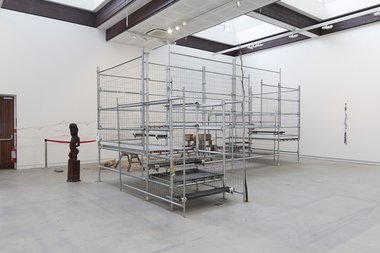
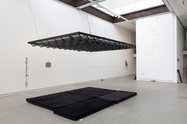

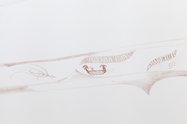


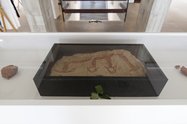
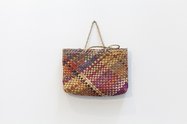


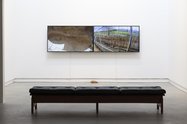

 Two Rooms presents a program of residencies and projects
Two Rooms presents a program of residencies and projects Advertising in this column
Advertising in this column



This Discussion has 3 comments.
Comment
Ngapera Kaweroa, 3:28 p.m. 9 October, 2017 #
Would be nice to have a Māori perspective instead of a pākehā one?
John Hurrell, 5:01 p.m. 9 October, 2017 #
Absolutely agree, Ngapera. Pākehā art critics are rare; Māori art commentators even more so.
Andrew Paul Wood, 1:16 a.m. 2 November, 2017 #
I don't disagree. The fact of the matter is that I was invited to participate by the artists as I have close and longstanding friendships with most of them - an invitation I was both honoured and humbled by - and they wanted someone who understood their practices and could talk about them across a range of themes and contexts. I didn't volunteer myself, and probably wouldn't have because I recognise my limitations and really would rather just take a seat and listen because Pākehā do altogether too much writing about Māori art as it is. Alas, we don't live in an ideal world and probably better the show be out there in the national attention than languishing away unreported for want of people with the right combination of qualifications available in the right place at the right time. I wholeheartedly endorse universities in Aoteaora establishing specialist programmes to correct this imbalance.
Participate
Register to Participate.
Sign in
Sign in to an existing account.